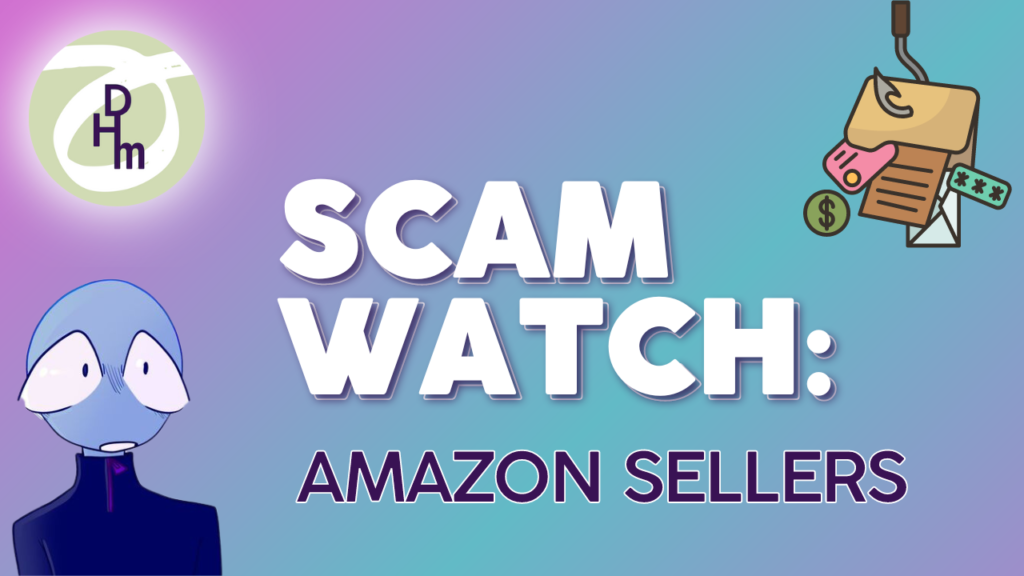Amazon is the largest online retailer in the world, and offers an incredibly wide range of products to its customers.
These products are often sold on Amazon not by the original manufacturer, but by smaller, independent sellers. These are called “third-party sellers” as they are neither Amazon nor the manufacturer, but a totally separate “third” party.
Amazon makes it easy for almost anyone to sell products on its platform, resulting in what’s known as “Third-Party Scams” from bad actors. These can put consumers at risk of fraud, identity theft, and financial losses.

Here are some of the most common Amazon Third-Party Scams:
1. Counterfeit Products
Some third-party sellers on Amazon may offer counterfeit products that are not as advertised.
These products may be cheaper than their genuine counterparts, but they are often of lower quality and can be dangerous. For example, fake electronics can pose a risk of fire or electrical shock.
⚠️ Side note: Never charge your phone on a bed while you sleep next to it. Just like a computer, it can overheat and that can be quite dangerous and may even cause a fire. The National Fire Protection Association (NFPA) advises, “Smartphones should be charged in locations that allow for adequate ventilation so they do not overheat. Charging them under a pillow, on a bed or couch doesn’t allow for the necessary airflow.”
2. Shipping Scams
Some third-party sellers may offer free or reduced shipping to entice customers to purchase their products. However, these sellers may hide and then inflate the shipping costs, which you have to notice on your receipt. Sometimes, they will not ship the product at all, leaving the customer without the product and out of pocket. Of course, Amazon protects buyers in such a case, but relies on customers to notice the lapse, and request a refund.
3. Fake Reviews
Some third-party sellers offer incentives or payments to customers in exchange for positive reviews. Or, they may simply pay someone to create positive reviews from multiple fake accounts. This can distort the representation of a product’s quality and mislead customers. Be suspicious of multiple short reviews claiming 5 stars.

4. Unauthorized Account Access
Scammers may hack into to your Amazon account, which allows them to make unauthorized purchases using your stored credit card. Since they know when a purchase is set to land on your doorstep (and your address), they nab the box within minutes of arrival.
5. Brushing Scams:
When a customer receives a package they didn’t order, it may be a scam called “brushing.” Brushing scams occur when scammers send packages to people who did not order them. The intention is to recieve a “verified buyer” designation on the fake review they write using your identity. The costs to mail a product are minimal, so the scam works out in their favor by convincing many others to purchase from them.
To avoid falling victim to Amazon third-party scams, it’s important to be vigilant and take precautions, such as:
Only buy from shops you recognize with good ratings and reviews. Longer reviews with photos are harder to fake, and therefore, more trustworthy.
Don’t click on links in emails. Instead, navigate to the website yourself. Be extremely cautious whenever a website asks you to provide personal information, and verify the website’s identity by double checking the URL.
Use a strong password for your Amazon account (14+ characters) and two-factor authentication to protect it.
If you do encounter suspicious activity, an unwanted package, or believe you’ve been a victim of fraud, contact Amazon customer service immediately.
Want to learn more about similar online scams? Click here.
Want help making this change to your system? Digital Helpmates offers one-on-one tech tutoring to home and business users at affordable prices. Find out more about our dedicated tech tutoring and Jumpstart Office Teams at https://digitalhelpmates.com.
Find more tips on our YouTube Channel: ![]() Digital Helpmates
Digital Helpmates

